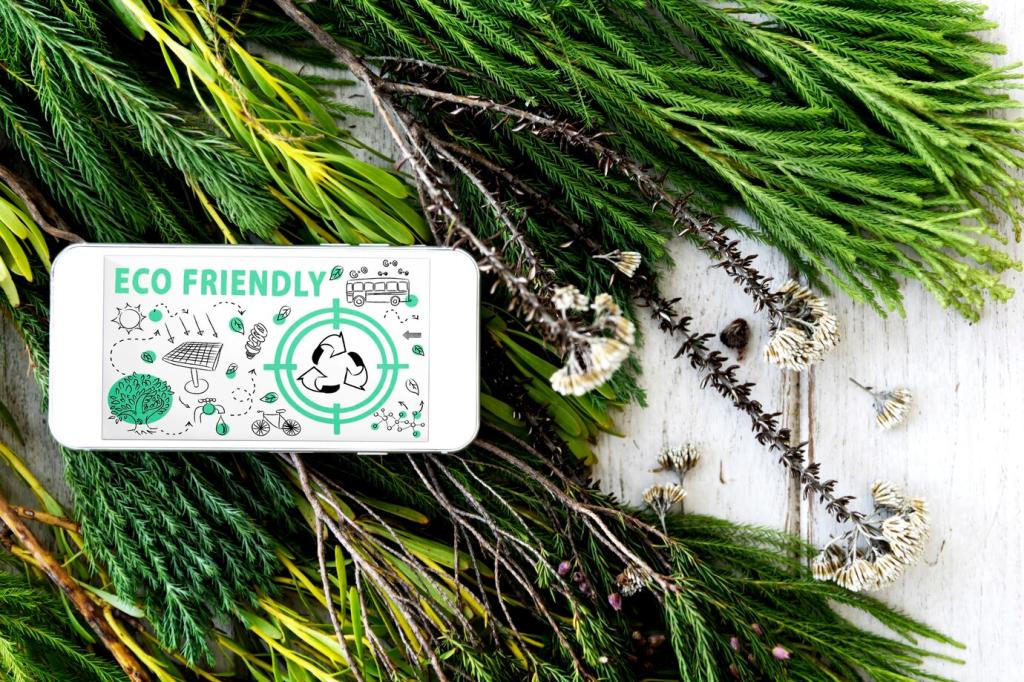
Eco-Friendly Materials in Sustainable Furniture Design
Eco-friendly materials are transforming the way we approach furniture design, blending sustainability, aesthetics, and functionality. As concerns for the environment have grown, designers and consumers alike are prioritizing materials that reduce negative impact on our planet. Sustainable furniture design focuses on using renewable resources, minimizing waste, and ensuring the longevity of products. This approach not only benefits the environment but also promotes healthier living spaces and pushes innovation within the industry. Below, we delve into various aspects of eco-friendly material use in sustainable furniture design, exploring renewable sources, advances in manufacturing, and the far-reaching benefits these choices offer.

Environmental Impact Reduction
Using sustainable materials in furniture considerably reduces the negative impact on ecosystems and resources. Conventional furniture often relies on non-renewable or hazardous substances, leading to deforestation, toxic emissions, and increased landfill waste. Eco-friendly materials, on the other hand, are sourced with care for environmental limitations, consuming fewer resources and generating less pollution. New manufacturing processes also prioritize energy efficiency, closed-loop systems, and biodegradable waste, which collectively help decrease the carbon footprint. As awareness grows, consumers and manufacturers appreciate how each sustainable choice contributes to a cleaner, healthier Earth by preserving vital natural landscapes and reducing the strain on our environment.
Long-Term Durability and Value
Furniture made from eco-friendly materials is typically designed for durability, offering products that last longer and withstand the test of time. Unlike mass-produced items prone to fast wear and tear, sustainably designed pieces are built with quality and longevity in mind. This commitment to durability not only reduces the frequency of replacements, thus minimizing waste but also offers greater value for the consumer. Over time, these pieces mature beautifully, often acquiring a patina that enhances their character. As consumers recognize the advantages of owning well-made, lasting furniture, the demand for sustainable solutions continues to grow, further pushing the industry towards innovation and responsible design.
Popular Eco-Friendly Wood Choices
Bamboo stands out as one of the most sustainable wood alternatives in furniture design, growing exceptionally fast and regenerating quickly without the need for pesticides or fertilizers. Its rapid growth cycle means that bamboo forests can be harvested regularly without causing significant ecological disruption. Additionally, bamboo’s strength and flexibility make it ideal for a wide variety of furniture applications, from lightweight chairs to durable tables. Adopting bamboo not only supports ecological conservation but also introduces unique aesthetic properties, including natural grain patterns reminiscent of classic hardwoods. As the global demand for sustainable materials rises, bamboo’s role in eco-friendly furniture is set to increase.
Reclaimed wood breathes new life into old materials, reducing the need for virgin timber and helping to mitigate deforestation. Harvested from sources such as dismantled barns, factories, or decommissioned boats, reclaimed wood offers unique textures, character, and historical context to new furniture designs. This approach conserves resources and keeps useful materials from landfills while ensuring every piece remains distinct. Recycled wood, manufactured from offcuts and leftovers, further minimizes waste within the industry. Both reclaimed and recycled options exemplify how thoughtful sourcing and craftsmanship can transform previously discarded materials into stunning, high-quality furniture that stands the test of time.
The Forest Stewardship Council (FSC) certification provides assurance that hardwoods used in furniture production are harvested from responsibly managed forests that provide social, environmental, and economic benefits. FSC-certified woods, including oak, walnut, maple, and teak, offer a sustainable alternative to traditional hardwoods, guaranteeing traceability and ethical sourcing. These certifications encourage better forest management practices, helping to preserve critical habitats and respect the rights of indigenous communities. When consumers choose furniture made from FSC-certified hardwoods, they support efforts to protect global forests and encourage the wider adoption of sustainable forestry in the furniture industry.

Innovative Upholstery Materials
Organic Cotton and Linen
Organic cotton and linen are transforming upholstery by offering soft, durable, and hypoallergenic alternatives to synthetic fabrics. Cultivated without harmful chemicals or pesticides, organic fibers maintain soil health and support biodiversity. These materials require less water and energy than their conventional counterparts, reducing their overall environmental burden. In addition to their environmental benefits, organic cotton and linen offer breathability and temperature regulation, making them especially suitable for furniture in homes with children or allergy sufferers. Designers appreciate their subtle textures and ability to naturally complement various décor styles, further solidifying their place in sustainable furniture creation.
Recycled Synthetic Fibers
With growing attention to plastic pollution and resource depletion, recycled PET (polyethylene terephthalate) and other post-consumer fibers are emerging as sustainable alternatives for upholstery. By converting discarded plastic bottles and waste textiles into new, high-performance fabrics, these materials help to reduce landfill contributions and the demand for virgin petrochemicals. Recycled synthetics are durable, stain-resistant, and easy to maintain, making them practical choices for high-traffic areas without sacrificing eco-responsibility. Integrating recycled fibers into upholstery design not only diverts waste but also illustrates how innovation can address environmental challenges in fresh, appealing ways.
Plant-Based Leathers and Alternatives
Plant-based leathers, such as those derived from cork, pineapple leaves, and mushrooms, are providing cruelty-free and environmentally friendly alternatives to animal hides. These innovative materials mimic the texture and durability of traditional leather while significantly reducing the impacts of livestock agriculture and tanning processes. Cork, for example, can be harvested without harming trees, retaining forests and their vital ecological functions. Pineapple “leather” (Piñatex) and mycelium-based materials are rapidly gaining popularity for their biodegradability and sustainable production. These alternatives are not only stylish and versatile but also represent an exciting evolution in eco-conscious furniture upholstery.
Non-Toxic Finishes and Adhesives

Water-Based Finishes
Water-based paints, varnishes, and stains have risen to prominence in sustainable furniture design due to their low levels of volatile organic compounds (VOCs) and minimal environmental harm. Unlike conventional solvent-based finishes, which can release toxic fumes during application and use, water-based products emit far fewer pollutants into the air. This improves indoor air quality, protects workers, and reduces the risk of fire hazards. In addition to their environmental benefits, many water-based finishes now rival their solvent-based counterparts in terms of durability, color clarity, and resistance to wear, making them a key component of eco-friendly furniture.

Natural Oils and Waxes
Natural finishes such as linseed oil, beeswax, and carnauba wax provide traditional yet sustainable means of protecting wood surfaces. These plant- and animal-based products penetrate deep into the wood grain, enhancing its natural beauty and prolonging its life without introducing harmful chemicals. Natural oils and waxes are biodegradable and renewable, and they can be reapplied over time to maintain the furniture’s appearance. Unlike synthetic coatings, these options avoid plastic residues and minimize pollution during both production and disposal. The resurgence of natural oils and waxes in modern furniture design underscores a growing appreciation for authenticity and low-impact living.

Low-Emission Adhesives
The adhesives used in furniture manufacturing often contain formaldehyde or other toxic substances that off-gas over time, undermining sustainability goals and indoor air safety. Low-emission or formaldehyde-free glues are changing industry standards, reducing harmful emissions and protecting both workers and end-users. These adhesives use technology derived from natural sources, such as soy or other bio-based resins, offering strong bonds without sacrificing environmental priorities. As regulations and consumer demand continue to steer the industry towards safer materials, low-emission adhesives are taking center stage, ensuring that sustainable design considers every detail down to the molecular level.
Biodegradable Natural Fibers
Biodegradable furniture incorporates fibers such as hemp, jute, and rattan, which decompose naturally without leaving toxic residues in the environment. These materials offer remarkable strength and flexibility, making them suitable for woven chairs, baskets, and decorative pieces. Designers appreciate how natural fibers can be harvested with minimal environmental disruption, supporting rural economies and traditional crafts. Once discarded, products made from these fibers break down into benign organic matter, regenerating soil and reducing landfill pressure. Biodegradability not only addresses end-of-life concerns but also embodies the symbiotic relationship between people, materials, and the planet.
Molded Mycelium Components
Mycelium, the root structure of mushrooms, has recently gained attention as an extraordinary material for eco-friendly furniture. When grown in molds, mycelium composites take the shape of chairs, stools, and tabletops, offering impressive strength-to-weight ratios. As a living material, mycelium can be cultivated on agricultural waste, repurposing the byproduct of other industries. Once its lifecycle concludes, mycelium furniture can compost back into nutrient-rich soil, leaving virtually no ecological trace. This closed-loop potential makes mycelium an exciting symbol of nature-inspired technology, blending innovation with effortless biodegradability.
Compostable Packaging and Accessories
Sustainability extends beyond the furniture item itself to include packaging and accessories that complete the consumer experience. Compostable packaging materials, such as starch-based foams or mushroom packaging, ensure that every element of the product lifecycle aligns with environmental values. By decaying harmlessly in compost or landfill, these materials avoid persisting as microplastic pollution and support natural decomposition processes. Designers also explore compostable accessories, including lampshades or drawer dividers made from biodegradable resins. The move towards compostability in all aspects of furniture production demonstrates a commitment to responsible design from production to post-use.
The Role of Innovation and Technology
3D printing, also called additive manufacturing, is revolutionizing furniture design by efficiently using raw materials and enabling complex forms that would be difficult to create with traditional techniques. When combined with renewable or recycled feedstocks—such as bioplastics or reclaimed wood fibers—3D printing drastically reduces waste and the need for excess packaging or shipping. This allows for rapid prototyping, customization, and resource-efficient production, aligning perfectly with eco-friendly principles. By marrying digital precision with sustainable inputs, 3D printing paves the way for flexible, responsive, and green furniture manufacturing that meets the demands of a modern society.


Previous slide
Next slide
